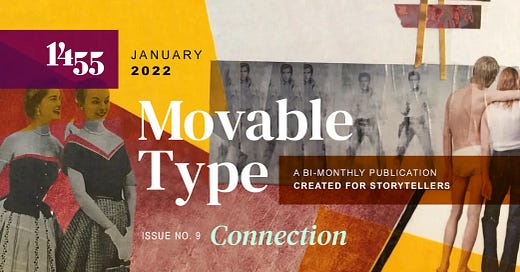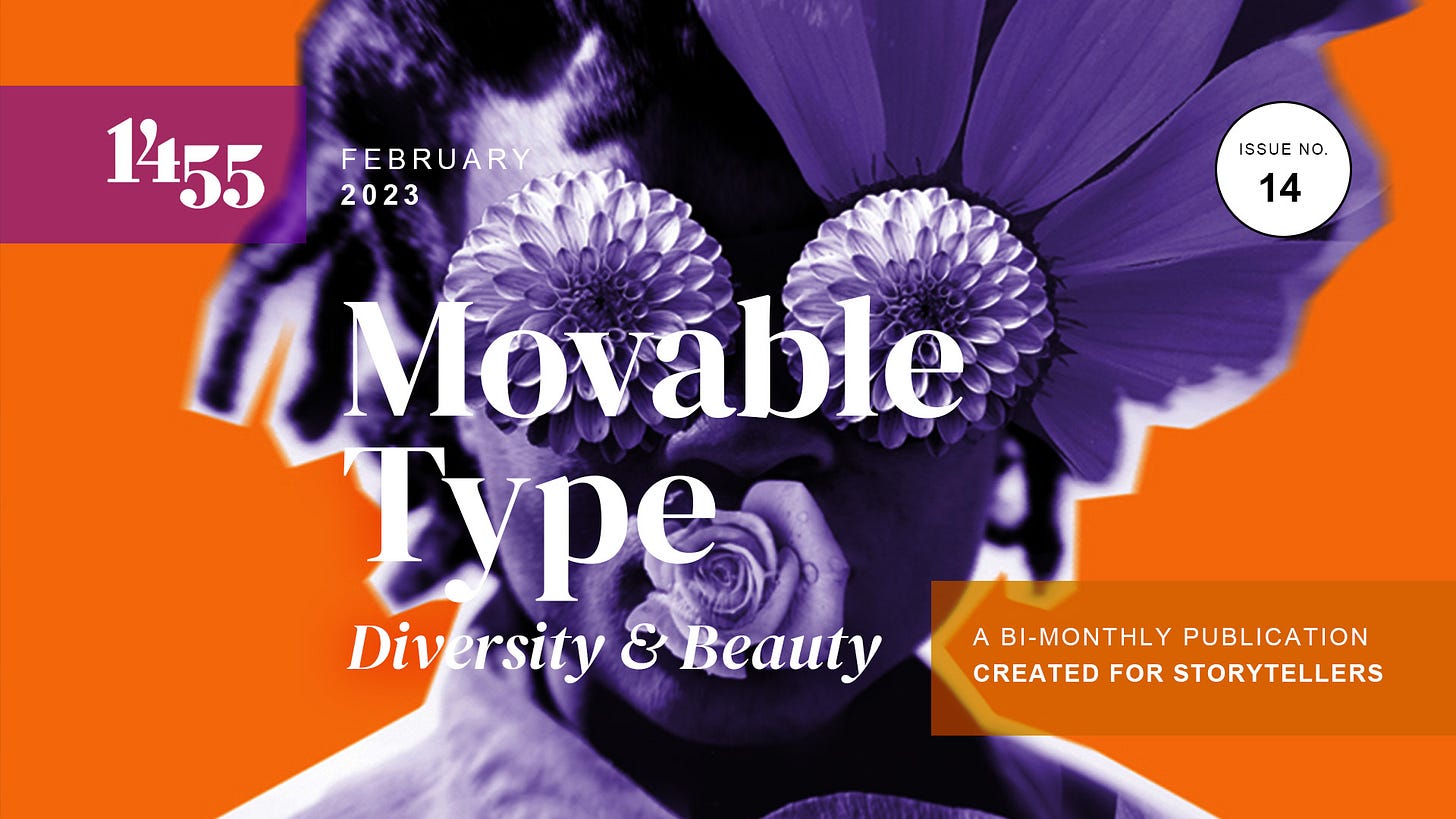I. Connection
Why do we tell stories?
To inform, to inspire, to connect.
The miracle of art is the way it enables us to express things at once inextricable from ourselves and more encompassing than the sum of an individual existence. More, it facilitates an exchange, across language, time, and space. In short, it provides the opportunity for connection.
The methods and meanings of connection are in constant flux, just as art evolves, over time. Back in a different, arguably simpler era, connection occurred in the present tense, in person. Or did it? Another miracle of art is the way it defies death (literal, figurative): so long as human eyes, ears, and hearts are available to receive it, art can align us through centuries. Who hasn’t, on occasion, felt closer to an author or work of art than their closest relatives?
Art has the possibility of teaching us so many things, and in ways that cut across economic, geographic, and even historical barriers. An exceptional poem, song, story, painting, or photograph can present experiences from a life we don’t know or could only imagine, or it can remind us that most human beings are desperate for the same things: love, peace, understanding, justice, compassion, community, beauty.
Creative storytelling is never a static act. Whether intended to unify or disrupt, the reaction, when it’s received, is an antidote to solitude (sometimes even despair)—and instigates progression, on personal or societal levels. The impact of art can be empowering, and a human being has changed, invariably for the better, having been part of the connection.
II. Power
According to Plato, the measure of a man is what he does with power.
George Orwell, who knew a thing or two about what drives human behavior—and with a couple more centuries of history than Plato was privy to—declared: the object of power is power.
Both of these sentiments, wise in ways that cut across sociopolitical, military, religious, and academic concerns, seem especially apt when reflecting on current events. They also remind us that, as it relates to humankind’s worst tendencies, power—which can be defined as leverage, ownership, access, agency, subjugation, or some combination of all these—is invariably the prime, primal impulse.
One might be tempted to observe that we too are animals, and what is nature if not a never-ending battle for supremacy and survival? Well, humans, with our big brains (and libraries of documented atrocities committed by and against our own kind) and evolved hearts, remain the only inhabitants of this world who know might doesn’t make right, yet fabricate or justify reasons why this time it’s different, and violence and collateral damage are, alas, unavoidable. Of course, to our disbelieving eyes, we see events unfolding right now—in the 21st Century—where a dictator is scarcely attempting to rationalize his barbarity.
What, then, does art tell us at times like this?
Quite a bit, actually—and it always has. Plato the philosophizer and Orwell the author both used storytelling to describe and explain who we are, what we do, and why we do it. Is there any multi-volume narrative that can tell us more about the pernicious tendencies of the powerful than what Percy Bysshe Shelley achieves in only 14 lines with “Ozymandias”? Does any big-name biography explain conflict and what drives it better than Bob Dylan’s “Masters of War” (or Black Sabbath’s “War Pigs,” if you prefer)? No words are necessary for a genius like Goya to indelibly illustrate corruption and brutality—and once you’ve seen his work you never unsee it.
Perhaps that’s the rub: the people who are drawn to art are seldom the ones most in need of its lessons. More: if so many of our worst ambassadors, including psychopaths ranging from Cortés to Hitler to Putin, were able or willing to expose themselves to the intellectual and spiritual riches our best storytelling imparts, we might have answers to questions that shouldn’t need asking.
III. Diversity & Beauty
Beauty, it’s said, is in the eye of the beholder, which is at once a succinct and satisfactory definition of how we receive and respond to art. What’s worth celebrating, and why, is the impulse of criticism, and while it’s up to the writer to make a compelling case for the work in question, it’s the work itself that must survive time and trends.
But it’s not so simple, and never has been. Even ostensibly objective tastemakers are susceptible to the prevailing sentiments of their political and cultural milieus. Or, as the philosopher David Hume famously observed, “Beauty is no quality in things themselves: it exists merely in the mind which contemplates them; and each mind perceives a different beauty.”
Our contemporary notions of beauty have evolved and expanded, accordingly. Only more so, as the democratization of content—across all mediums—ensures we are seeing faces, places, and points of view that may have seemed exotic or else were silenced altogether, less than a quarter-century ago. This is all to the good, although we have the predictable (and ever-cynical) braying from the usual suspects. The white robes have, in some cases, changed to red hats, and the purveyors of “tradition” are extremely scripted and exorbitantly remunerated. Basically, same as it always was, except supersized and, against all probability, dumber and more backward than ever.
And even though our contemporary appreciation of what constitutes beauty, both literally and figuratively, is broader and more encompassing, it also complicates—as it should—our collective assessment of what we used to agree was great, in ostensibly simpler times. Here’s the thing: even if corrupted forces (mostly white and male) faced less resistance establishing things like curriculum and control of the narrative (via the literary canon and the WASP-y perspective that shaped entertainment, for starters), it’s important to note that our best art has always pushed back against the conventions and mores that sustain conformity and monotony.
The Great Gatsby, for instance, suffused with insufferable one percenters as it is, remains a peerless annihilation of unfettered capitalism (and the types of people it produces); Moby Dick—as many too intimidated to read it are unaware—is filled with a multi-racial cast that makes a winning case for autonomy and Democracy with a capital D. Of course, authors such as Hurston and Hughes, Ellison and Baldwin, Morrison and Harjo, and many, many others, have been revealing the fault lines behind the color line, illustrating that our world is better, smarter, and more humane when we listen to the lower frequencies.
Today we are, arguably, able to receive insight and wisdom, with less interference and fewer gatekeepers, even as the internet also ensures we must be vigilant about the ways disinformation and actual “fake news” is easily disseminated. How to keep up with the ceaseless churn of content? We can’t, and on balance this is a very good problem to have. Better, always, to revise and edit an unreadable work-in-progress as opposed to having received opinion doled out in small doses by the few and powerful.
*These are excerpts from 1455’s publication Movable Type; to view the archives and explore all previous issues, go here.
#TBT Video.







